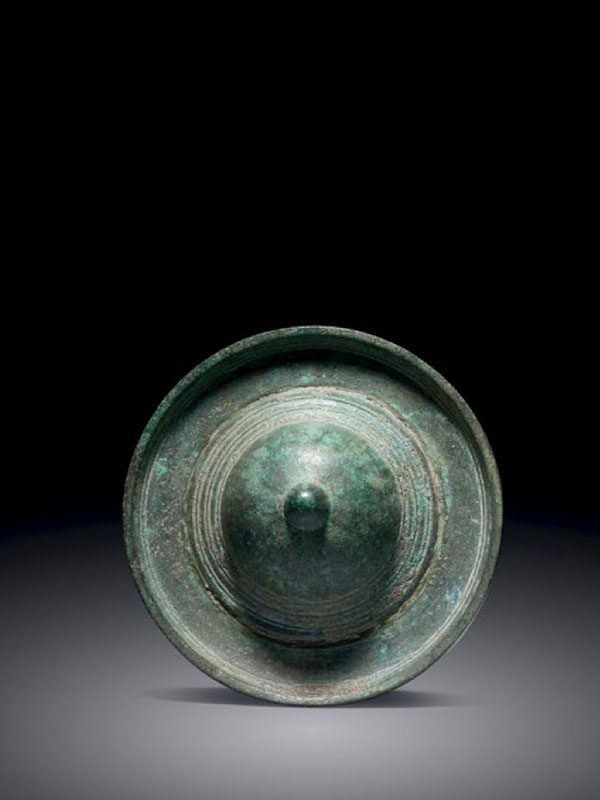Bronze mirror
A cast bronze mirror of circular form. The reflecting surface is of slightly convex shape. The concave back has a prominent central boss with a smaller boss on top. A plain band runs close to the edge all around. The surface of the mirror is well-preserved and has a warm, even green patina.
The earliest mirrors used by people were most likely pools of dark, still water, or water collected in primitive vessels of some kind. The first known manufactured mirrors date to around 6000 BC. These were made of polished stone and were found in Anatolia (modern day Turkey). Bronze mirrors were first manufactured around 2000 BC in China. Apart from practical use to reflect a person’s face, the mirror is also an object of power and authority in several Asian cultures. It is thought to reflect the heart and soul and used in religious rituals and in temples. A comparable mirror from the 15th century from East Java is in the collection of the Victoria and Albert Museum, London.[1]
PROVENANCE
Moreau-Gobard, Paris Private collection, UK
- Victoria and Albert Museum, London, inventory number IS.5:1-1994

